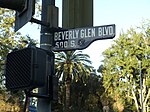Mission San Gabriel Arcángel (Spanish: Misión de San Gabriel Arcángel) is a Californian mission and historic landmark in San Gabriel, California. It was founded by Spaniards of the Franciscan order on "The Feast of the Birth of Mary," September 8, 1771, as the fourth of what would become twenty-one Spanish missions in California. San Gabriel Arcángel was named after the Archangel Gabriel and often referred to as the "Godmother of the Pueblo of Los Angeles." The mission was built and run using what has been described as slave labor from nearby Tongva villages, such as Yaanga and was built on the site of the village of Toviscanga. When the nearby Pueblo de los Ángeles was built in 1781, the mission competed with the emerging pueblo for control of Indigenous labor.The mission was designed by Antonio Cruzado, who gave the building its capped buttresses and the tall narrow windows, which are unique among the missions of the California chain. A large stone cross stands in the center of the Campo Santo (cemetery), first consecrated in 1778 and then again on January 29, 1939. It serves as the final resting place for some 6,000 "neophytes". It is the oldest and first cemetery in the state of California.Also interred at the Mission are the bodies of numerous Franciscan priests who died during their time of service, as well as the remains of Reverend Raymond Catalan, C.M.F., who undertook the restoration of the Mission's gardens. Entombed at the foot of the altar are the remains of eight Franciscan priests (listed in order of interment): Miguel Sánchez, Antonio Cruzado, Francisco Dumetz, Ramón Ulibarri, Joaquín P. Núñez, Gerónimo Boscana, José Bernardo Sánchez, and Blas Ordaz. Buried among the priests is centenarian Eulalia Pérez de Guillén Mariné, the "keeper of the keys" under Spanish rule; her grave is marked by a bench dedicated in her memory, and Victoria Reid, a woman from Comicranga, who was taken to the mission at a young age and became a respected figure in Mexican California.According to Spanish legend, the founding expedition was confronted by a large group of native Tongva peoples whose intention was to drive the strangers away. One of the priests laid a painting of "Our Lady of Sorrows" on the ground for all to see, whereupon the natives, designated by the settlers as the Gabrieleños, immediately made peace with the missionaries, because they were so moved by the painting's beauty. Today the 300-year-old work hangs in front of and slightly to the left of the old high altar and reredos in the Mission's sanctuary. Resistance to the mission by the Tongva was recorded and how much the neophytes embraced Catholicism remains a subject of debate among scholars.






